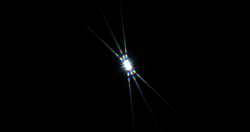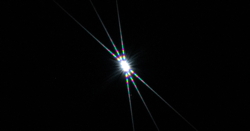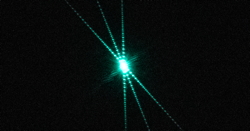More Optolong Deep Sky Astrophotography Filters Focus Tests
Posted: 5 November 2019
On my First Light Optolong HA SII OIII Narrowband Filters report I mentioned that my prime focus adapter does not insert fully into the visual back when the Optolong filters are attached. That is also true when I attach any filter to the adapter. I just never worried about it before as I could easily refocus when adding a filter. But now that I'll be swapping filters when imaging the same object I do need to worry about it. One of the Zhumell 2" filters that I do not use adds essentially the same thickness as the Optolong filters to the adapter, as seen here:


Hopefully the difference of 0.02mm won't make much of a focus difference.
I was able to unscrew the retaining ring on the Zhumell filter and remove its glass. I now I have a "filter spacer" for my prime focus adapter that should allow good focusing on a star without needing to refocus with the Optolong filters attached. Or at least, that was the plan.

Unfortunately, Cloudy skies continued until Monday, 4 November, so more filter tests were delayed until then.
|
Open: Monday, 4 November 2019, 1807 MST Temperature: 78°F |
Session: 1403 Conditions: Mostly clear |
Equipment Used:
12" f/8 LX600 w/StarLock
2" 24mm UWA eyepiece
SHO Deep Sky Astronomical Filters
Camera:
iPhone 11 Pro Max
D850 DSLR
After opening the observatory I took this handheld iPhone 11 Pro Max photo (1X lens, normal exposure, slightly cropped) of the sky showing the planets Saturn, Jupiter, and Venus and some clouds that were approaching.

Mouseover or tap on image for labels
I then tested the 2" Optolong filters with the prime focus adapter and focal reducer. It seemed that the spacer filter was required for the prime focus adapter but it was not required with the focal reducer.
1826 MST: LX600 ON, StarLock OFF, High Precision OFF.
1829 MST: viewed Jupiter and four moons, 102X. Jupiter was low in the sky and with clouds approaching the seeing was bad. Then viewed Saturn, 102X. It was a better view. Next, viewed the near First Quarter Moon, 102X.
Mounted the D850 DSLR at prime focus and took this photo (1/400sec, ISO 400, White Balance 5560K).

1845 MST: clouds were increasing.
I slewed the 12" telescope to the star Vega and began doing more focus tests with the Optolong SII, HA, and OIII Narrowband Filters and D850 DSLR at prime focus. I focused on Vega using a Bahtinov Mask with the spacer filter inplace (photo on the left below). I replaced the spacer filter with the SII filter without changing the focus (photo on the right). 1859 MST: StarLock ON.


I was surprised to see a focus change. I guess that 0.02mm did make a difference.
I removed the SII filter and refocused Vega without the spacer filter (top photo). I switched to the SII filter and focused using Live View at ISO 25600. Zooming in on the Live View allowed me to see the diffraction pattern (left photo). I switched to the HA (middle photo) and OIII filter (right photo). As can be seen in these photos, once focused for the SII filter the other two filters are infocus.




StarLock autoguiding was erratic due to clouds and poor seeing. It was obvious I would not be able to any Deep Sky Object imaging this night. So I decided to continue the filter focus tests using a focal reducer. Vega was focused without a filter (left photo). A slight focus shift was visible when using the SII filter (right photo) even though the filter did not prevent the focal reducer from being fully inserted in the visual back.


I refocused using Live View (ISO 25600) with the SII filter (left photo). No focus change was needed with the HA (middle) and OIII (right) photos.



These tests have confirmed that once a bright star is focused using the Bahtinov Mask with the SII filter, no focus adjustments will be needed for the HA and OIII filters.
1941 MST: StarLock OFF.
Viewed M57 (Ring Nebula), 102X.
1946 MST: LX600 OFF.
|
Close: Monday, 4 November 2019, 2003 MST Temperature: 66°F |
Session Length: 1h 56m Conditions: Partly cloudy |
Comments are welcome using Email. Twitter users can use the button below to tweet this report to their followers. Thanks.
Cassiopeia Observatory Home Page
Copyright ©2019 Michael L. Weasner / mweasner@me.com
URL = http://www.weasner.com/co/Reports/2019/11/05/index.html
